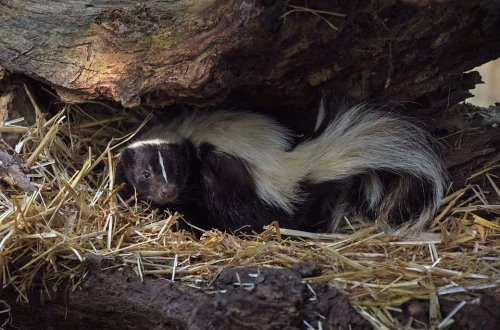Summary:
Pantry moths, also known as Indian meal moths, are a common household pest that infest stored food products, causing contamination and waste. This article provides actionable strategies to identify, control, and prevent pantry moth infestations. Homeowners, renters, and food businesses are all affected by these pests, which can lead to health risks and financial losses. By understanding effective control methods and preventive measures, readers can safeguard their pantry items and maintain a clean, pest-free environment.
What This Means for You:
- Learn how to identify pantry moths and signs of infestation early to prevent widespread damage.
- Discover proven methods to eliminate pantry moths, including cleaning, trapping, and proper food storage.
- Understand the importance of regular inspections to avoid future infestations.
- Failure to address pantry moths promptly can result in contaminated food and costly replacements.
How To Control Pantry Moths Explained:
Pantry moths are small insects that infest stored food products such as grains, cereals, nuts, and dried fruits. These pests are notorious for their ability to spread quickly, contaminating large quantities of food. Controlling pantry moths involves a combination of identification, elimination, and prevention strategies. Early detection is crucial, as infestations can escalate rapidly, leading to significant losses.
Understanding the life cycle of pantry moths is key to effective control. These pests lay eggs in food sources, which hatch into larvae that feed on the products. The larvae then spin cocoons and develop into adult moths, continuing the cycle. By breaking this cycle through proper sanitation, trapping, and exclusion, you can effectively manage and eliminate pantry moth populations.
Types of Pest Issues:
Pantry moths are a specific type of stored product pest that primarily target dry goods. They are often introduced into homes through infested food items purchased from stores. Once inside, they can spread to other food containers, making them a persistent problem. Unlike other household pests like ants or cockroaches, pantry moths are not directly harmful to humans but can render food inedible.
State and federal regulations often address food safety and pest control in commercial settings, but homeowners are typically responsible for managing pantry moth infestations in their own spaces. While there are no specific laws targeting pantry moths, improper food storage and unsanitary conditions can lead to violations of health and safety codes, especially in food businesses.
Preventing cross-contamination is critical in addressing pantry moth issues. Infested items should be disposed of immediately, and unaffected products should be stored in airtight containers to prevent further spread. Regularly checking food items for signs of infestation can help mitigate the risk of a widespread problem.
Common Pest Control Methods:
One of the most effective ways to control pantry moths is through thorough cleaning. Empty all pantry shelves, vacuum crevices, and wipe down surfaces with soapy water to remove eggs and larvae. Discard any infested food items and store remaining products in airtight containers to prevent reinfestation.
Traps are another useful tool for managing pantry moths. Pheromone traps attract and capture adult moths, disrupting their breeding cycle. These traps are non-toxic and can be placed in pantries or other storage areas to monitor and reduce moth populations. Additionally, freezing infested food items for several days can kill larvae and eggs, making them safe to consume or dispose of.
Natural remedies such as bay leaves, cedar chips, or peppermint oil can also deter pantry moths. While these methods may not eliminate an existing infestation, they can help prevent future problems. For severe infestations, professional pest control services may be necessary to ensure complete eradication.
Risks and Consequences:
Ignoring a pantry moth infestation can lead to significant health and financial risks. Contaminated food can cause allergic reactions or digestive issues if consumed, posing a threat to household members. Additionally, widespread infestations can result in the loss of large quantities of food, leading to unnecessary expenses.
In commercial settings, pantry moth infestations can damage a business’s reputation and lead to violations of food safety regulations. Regular inspections and preventive measures are essential to avoid these consequences. Homeowners and businesses alike should prioritize pest control to maintain a safe and hygienic environment.
Choosing a Pest Control Service:
When dealing with a persistent pantry moth problem, hiring a professional pest control service is often the best solution. Look for companies with experience in managing stored product pests and a proven track record of success. Ensure they use safe, environmentally friendly methods to eliminate pantry moths without harming your family or pets.
Before hiring, ask about their inspection process, treatment options, and follow-up procedures. A reputable pest control service will provide a detailed plan tailored to your specific situation. Regular maintenance and preventive treatments can help ensure that pantry moths do not return.
People Also Ask About:
- How do pantry moths get into my home? Pantry moths often enter homes through infested food products purchased from stores. They can also fly in through open windows or doors.
- Can pantry moths make you sick? While pantry moths are not directly harmful to humans, consuming contaminated food can cause digestive issues or allergic reactions.
- How do I know if I have a pantry moth infestation? Look for webbing, larvae, or adult moths in your pantry. Infested food may also have a musty odor.
- What is the best way to store food to prevent pantry moths? Store dry goods in airtight containers made of glass, metal, or heavy-duty plastic to prevent pantry moths from accessing them.
- Are pantry moth traps effective? Yes, pheromone traps are highly effective at capturing adult moths and interrupting their breeding cycle.
Expert Opinion:
Preventing pantry moth infestations requires a proactive approach that includes regular inspections, proper food storage, and timely intervention. Early detection is critical to minimizing damage and avoiding costly replacements. For severe infestations, professional pest control services offer the most effective and long-lasting solutions.
Related Key Terms:
- How to get rid of pantry moths naturally
- Pantry moth prevention tips
- Best pantry moth traps
- Signs of pantry moth infestation
- Professional pest control for pantry moths
- Safe food storage to prevent pantry moths
Pest Control Disclaimer
This content is for educational purposes only and does not replace professional pest inspection, treatment, or safety advice. Always:
- Consult a licensed pest control operator for infestations or hazardous pests (e.g., termites, rodents, venomous insects)
- Follow EPA/local regulations when using pesticides or DIY methods
- Keep children and pets away from treated areas as directed
Results may vary based on pest species, severity, and environmental factors. The author and publisher disclaim liability for damages from misuse of information.
*Featured image sourced by Pixabay.com





